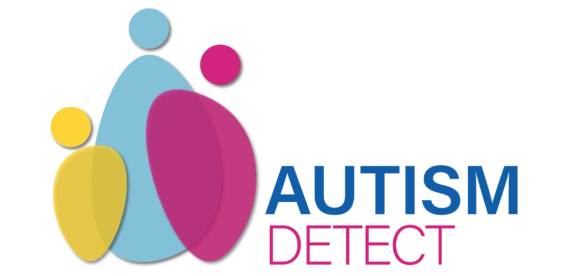October marks Down Syndrome Awareness Month in the UK, a time to spotlight inclusion, challenge outdated perceptions, and celebrate the strengths of people with Down syndrome.
While Down syndrome is a genetic condition that affects learning and development, it can sometimes co-occur with autism; a neurodevelopmental difference that shapes communication and behaviour.
This overlap can leave families asking: can someone with Down Syndrome have autism? The answer is yes.
Autism can co-occur with Down syndrome, though it presents differently from “classic” autism.
A large UK study by Warner, Moss, Smith and Howlin published in Autism Research (Vol. 7, Issue 4, August 2014) examined around 500 children with Down syndrome aged 6–15 in England and Wales. Using the Social Communication Questionnaire, they found 16.5% met the cut-off for autism and 37.7% met the broader cut-off for ASD.
Understanding co-occurring autism and Down Syndrome is crucial for timely assessment, personalised support, and better outcomes across home, education, and care settings.
While Down syndrome and autism are distinct, they can occur together, shaping development in unique and sometimes misunderstood ways.
Understanding the Overlap Between Down Syndrome and Autism
Children with Down syndrome often experience developmental delays in areas like communication, motor skills, and social interaction, this is well understood. But when certain behaviours or milestones don’t follow the expected Down syndrome pattern, it may signal that something else is also at play.
That’s often where signs of co-occurring autism begin to emerge.
What Does Co-Occurring Autism Mean?
A dual diagnosis means a person has more than one condition at once. In this context, it refers to having both Down syndrome and autism. Children with this profile may communicate differently, rely on structure, or have sensory needs that set them apart from others with just one diagnosis.
Recognising co-occurring autism and Down Syndrome means paying close attention to what a child is showing us, not just through words, but through patterns of behaviour, routines, and how they interact with people and their surroundings.
Why Dual Diagnosis Can Be Overlooked
Because autism doesn’t always look the same in children with Down syndrome, signs may be missed or explained away as part of general developmental delay. This is known as diagnostic overshadowing, when one condition masks the presence of another.
What’s seen as “just part of Down syndrome” may in fact be something more specific. For example, difficulties with transitions, repetitive movements, or unusually intense interests could point to co-occurring autism and Down Syndrome.
Spotting that second layer takes experience, time, and input from professionals who understand both conditions, and the grey area in between.
Recognising Signs of Autism in Children with Down Syndrome
Spotting autism in a child who already has Down syndrome isn’t always straightforward, but certain patterns can help families recognise when to look more closely for signs of co-occurring autism and Down Syndrome.
Early Social and Communication Differences
Children with Down syndrome typically show warmth in social interactions, with strong use of eye contact, gestures, and engagement. When autism is also present, some of these typical patterns may be reduced or absent.
Look out for:
- Less use of facial expressions, gestures, or eye contact than expected
- Delayed speech or language development that doesn’t follow the usual Down syndrome progression
- Limited interest in shared attention or turn-taking play
These early differences may suggest autism and Down Syndrome overlap in how the child communicates.
Behavioural or Sensory Differences
In some children, co-occurring autism and Down Syndrome becomes more apparent through behaviour or sensory responses.
Common signs include:
- Repetitive movements like hand-flapping, spinning, or lining up objects
- Strong need for routine, with difficulty handling changes in schedule or environment
- Intense reactions to certain sounds, textures, or lights, or seeking out sensory input in unusual ways
These traits may go beyond what’s typical for Down syndrome alone and point toward dual diagnosis Down Syndrome autism.
Seeking Assessment and Diagnosis
If you’re noticing traits that seem outside the expected pattern for Down syndrome, it’s worth starting a conversation with your GP or health visitor. In the UK, the usual path to an autism assessment is through an NHS referral, typically via your local community paediatrician.
But while children with Down syndrome are often referred quickly for developmental assessments, recognising and diagnosing co-occurring autism can still be complex. That’s where providers like Autism Detect can help. Our team offers affordable, specialist-led diagnostic assessments, designed specifically for profiles that don’t fit neatly into one box.
We offer clear guidance, next steps, and support for families who want a second opinion, a faster route, or simply a deeper understanding of what their child needs.
Assessment is typically carried out by a multi-disciplinary team, which may include speech and language therapists, psychologists, and medical professionals who understand how the two conditions interact.
A clear diagnosis can open the door to tailored support at school, at home, and beyond.
Supporting Families After a Dual Diagnosis
When families understand the full picture of their child’s needs, they’re better equipped to adapt daily routines, access support, and advocate with confidence.
Building on Strengths and Interests
Rather than focusing on what a child can’t do, it helps to lean into what lights them up.
Activities that match a child’s communication style or sensory preferences, like water play, music, or visual storytelling, can build confidence and connection.
Celebrating small wins and following a child’s lead often opens doors that structured programmes can miss.
Accessing Specialist Support
Early intervention makes a difference. Speech and language therapy, occupational therapy, and behavioural support can all be adapted for children with co-occurring autism and Down Syndrome.
Support is available through NHS community services, school SEND teams, and EHCPs but also through national and local chariti9es. Many offer practical advice, peer groups, and workshops where families can connect and share real-world support.
Emotional Support for Parents and Carers
A dual diagnosis often comes with a wave of mixed emotions; clarity, grief, relief, overwhelm.
It’s a lot.
You don’t have to navigate it alone. Peer-led groups through the Down’s Syndrome Association can offer community, understanding, and shared experience that professional advice alone can’t match.
The Employer and Workplace Perspective
Whether you’re a parent adjusting your work life, or an employer aiming to support neurodivergent staff, practical flexibility and awareness go a long way.
Workplace Rights and Adjustments (for Parents)
Under the Equality Act 2010, parents and carers have legal protections around discrimination, flexible working, and time off for dependents.
Employers can support by offering:
- Flexible hours or remote options
- Carer’s leave or unpaid time for medical appointments
- A culture that recognises the demands of complex caregiving
Supporting Neurodivergent Employees (for Employers)
For autistic adults, whether or not they also have Down syndrome; clear, supportive environments matter.
Reasonable adjustments might include:
- Predictable routines and deadlines
- Written instructions
- Quiet zones or low-stimulus spaces
Organisations like ACAS, and Inclusive Employers offer training and toolkits to build genuinely inclusive workplaces.
Education and Inclusion in Schools
Inclusive education gives children with Down syndrome and autism a better shot at learning in ways that truly work for them.
Developing an Individual Education Plan (IEP)
Every child with co-occurring autism and Down Syndrome benefits from a personalised approach.
- Teachers, SENCOs, and parents should work together to set clear, achievable goals.
- An effective IEP includes visual supports, sensory breaks, and flexible teaching methods that match the child’s learning profile.
For more on how autism and learning disabilities can interact in education, including challenges with reading, writing, and classroom support; read our guide on Autism and Learning Disabilities: Understanding the Overlap and Finding Support.
Building Peer Understanding and Inclusion
Creating a welcoming environment goes beyond support plans.
- Classmates can be encouraged to learn about neurodiversity through age-appropriate books, activities, or classroom discussions.
- Use Down Syndrome Awareness Month UK as a platform to promote inclusion, kindness, and curiosity, not pity.
Celebrating Awareness and Advocacy
October’s Down Syndrome Awareness Month UK isn’t just a campaign; it’s a call to shift how society sees learning, difference, and potential.
For families navigating the autism and Down Syndrome overlap, visibility matters. Awareness months are more than hashtags or themed assemblies; they’re a chance to challenge stereotypes, spark honest conversations, and push for systems that work better for everyone.
It’s also a time to recognise the voices that often go unheard: parents advocating behind the scenes, autistic individuals with Down syndrome finding their way in a world not built for them, and communities that show what inclusion looks like in action, not just theory.
Ways to Get Involved
- Join local or national events marking Down Syndrome Awareness Month UK, whether it’s a walk, school initiative, or online campaign.
- Share your family’s experience with co-occurring autism and Down Syndrome, your story may be the signpost another parent desperately needs.
- Support UK-based organisations championing neurodiversity inclusion, like the Down’s Syndrome Association, or your local SEND network.
Every small action helps build a culture that sees the child, not just the diagnosis.
Conclusion
Understanding co-occurring autism and Down Syndrome empowers families to move forward with clarity, not fear. Whether it’s navigating school, family life, or work, the right support can help individuals thrive on their own terms.
Early recognition matters.
Inclusive education, flexible workplaces, and tailored interventions all start with one thing: understanding the full picture. If you’re noticing traits that don’t quite fit the typical Down syndrome profile, we’re here to help.
At Autism Detect, we offer affordable, specialist-led children’s autism assessments and initial screening consultations designed for complex needs.
With awareness, action, and the right tools, individuals with Down Syndrome and autism in the UK can be better understood, better supported, and better included, every step of the way.
Frequently Asked Questions
Can someone with Down Syndrome also have autism?
Yes. Down syndrome and autism can co-occur, although they are separate conditions. This is called a dual diagnosis, and it may affect how a person communicates, behaves, and interacts with others.
How common is autism in people with Down Syndrome?
Estimates vary, but research suggests that a significant minority of children with Down syndrome may also meet criteria for autism spectrum disorder. The traits can present differently, which is why early, specialist assessment is key.
How do I recognise autism in my child with Down Syndrome?
Look for differences in social communication, sensory behaviours, and routines that go beyond what’s typical for Down syndrome. If you’re unsure, consider starting with an initial screening consultation through Autism Detect.
How can employers support parents of disabled children?
Under the Equality Act 2010, parents have rights to flexible working, carer’s leave, and protection from discrimination. Employers can support by offering clear communication, flexible hours, and a culture that understands the realities of complex caregiving.

Sophia Evans
Author
Sophia Evans is a freelance writer and autism ally who specialises in creating accessible, family-focused content for Autism Detect. Her passion for advocacy began when her younger brother was diagnosed in early childhood, inspiring her to support other families on similar journeys. With a background in child development and a talent for storytelling, Sophia brings empathy, clarity, and encouragement to her writing. Outside of work, she enjoys yoga, reading historical fiction, and spending time with her rescue dog.
All qualifications and professional experience mentioned above are genuine and verified by our editorial team. To respect the author's privacy, a pseudonym and image likeness are used.
